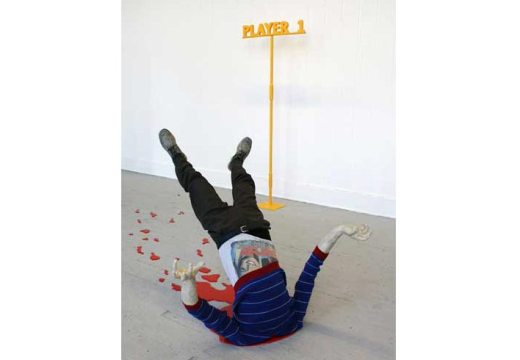Move over Turbine Hall, hallowed pantheon of contemporary art, shelter to the stranger reaches of human ambition, protector of eccentric vision. Phyllida Barlow’s colossal sculptural installation dock has just landed downriver, in the austere neo-classical, barrel-vaulted Duveen Galleries of Tate Britain. It is as though a colourful muddle of crude materials – cement, polystyrene, wood, cardboard, fabric – has just been washed up by a vast wave, leaving seven wonderfully wobbly looking monoliths, each as stonkingly absurd as the next.
All impossibly huge, the extraordinary, sprawling structures tease gravity and stretch into the furthest corners of the 100 metre-long central galleries. Remarkably, in spite of its ambition and enormous scale, dock manages to be entirely without pretension. Like the poignant skeletons of redundant dockers’ cranes found on the opposite bank of the Thames, it is an unintentionally elegant monument to overlooked ‘stuff’ – the armatures and detritus that carry remnants of activity, that speak of natural processes of collapse and renewal, and of the human propensity to construct and dismantle.
There is so much detail in gloriously peculiar places – way up high, underneath, in between, over there – that dock is impossible to take in at once. For once, refreshingly, a camera is totally redundant. Disarmingly joyful, this is more uplifting then anything currently on show in London, a spectacle that really does have to be experienced.
Phyllida Barlow’s commission, dock, is at Tate Britain until 19 October 2014.
















![Masterpiece [Re]discovery 2022. Photo: Ben Fisher Photography, courtesy of Masterpiece London](http://zephr.apollo-magazine.com/wp-content/uploads/2022/07/MPL2022_4263.jpg)
‘Like landscape, his objects seem to breathe’: Gordon Baldwin (1932–2025)